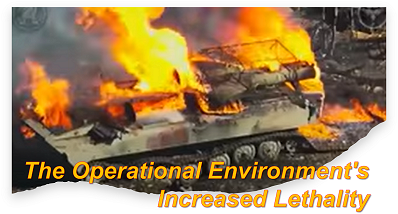[Editor’s Note: During the past decade, we’ve witnessed several conflicts around the globe that are shaping our understanding of the contemporary battlespace. Combat operations in Syria, Nagorno-Karabakh, and Ukraine have seen the convergence of battlefield transparency, autonomous systems, and massed and precision fires that have resulted in the Operational Environment’s increased lethality. Inexpensive, expendable, man-portable munitions in the hands of dismounted infantry are attriting exquisite, expensive, and finite combat systems — i.e., main battle tanks, capital warships, and strategic bombers — once the “gold-standard” of global military strength and dominance.
Army Mad Scientist is pleased to publish the second in our series of posts exploring the evolution of the Twenty-first century’s battlespace, how our pacing threat China is responding to it, and what the U.S. Army can do to prepare our Warfighters to fight and win decisively in it — Read on!]
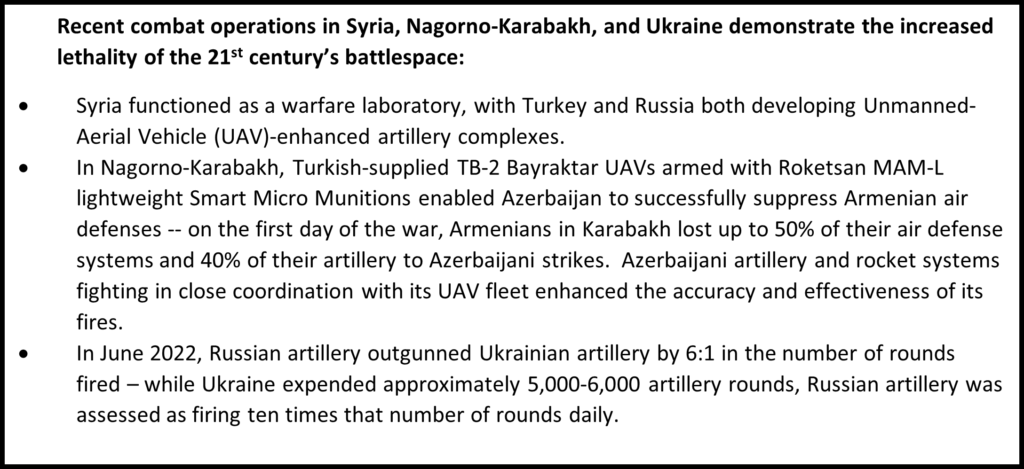
The Operational Environment is increasingly lethal with the ubiquity of sensors and proliferation of battlefield automation facilitating effective precision and massed strike capabilities. Forces that can be sensed are targeted, and if targeted, are destroyed or rendered inoperable. Sensors enable shooters to now execute fires with greater precision than ever before. The integration of ISR UAVs with tube and rocket artillery enables the delivery of accurate and timely conventional massed fires on target from disparate firing positions, while also facilitating precise targeting of high value targets 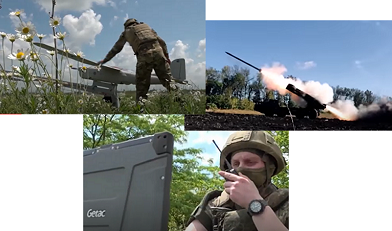 via Precision Guided Munitions (PGMs). These massed and precision fires have increased the lethality of contemporary combat operations across the depth of the battlefield, facilitating the targeting and destruction of maneuver forces on the forward edge of battle, defiladed forces entrenched in static defenses and urban areas, and Command and Control (C2), logistics nodes, and Main Supply Routes (MSRs) in rear areas.
via Precision Guided Munitions (PGMs). These massed and precision fires have increased the lethality of contemporary combat operations across the depth of the battlefield, facilitating the targeting and destruction of maneuver forces on the forward edge of battle, defiladed forces entrenched in static defenses and urban areas, and Command and Control (C2), logistics nodes, and Main Supply Routes (MSRs) in rear areas.
One Way Attack (OWA) UAVs, Loitering Munitions (LMs), and Unmanned Surface Vessels (USVs) have democratized the ability to execute strikes in both the Air and Sea Domains, granting lesser military forces parity with their better-armed adversaries. While attaining and maintaining Air Superiority 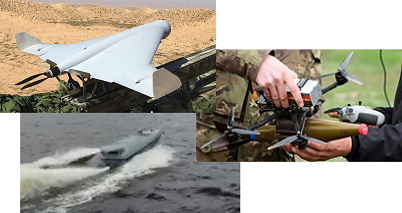 remains an important aspect of Large-Scale Combat Operations (LSCO), constellations of UAVs and LMs, integrated with airborne sensor platforms, enable pulsed, complex saturation attacks, potentially overwhelming an adversary’s defenses and countermeasures with the dilemma of near simultaneous, multi-vectored, multi-domain strikes.
remains an important aspect of Large-Scale Combat Operations (LSCO), constellations of UAVs and LMs, integrated with airborne sensor platforms, enable pulsed, complex saturation attacks, potentially overwhelming an adversary’s defenses and countermeasures with the dilemma of near simultaneous, multi-vectored, multi-domain strikes.
Greater numbers of inexpensive, expendable, man-portable munitions in the hands of dismounted infantry are attriting exquisite, expensive, and finite combat systems that were formerly measures of LSCO prowess. Vast 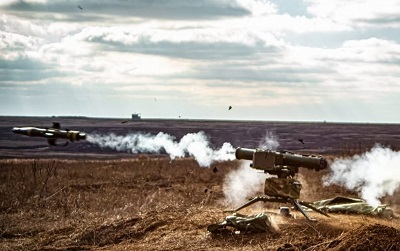 quantities of Ukrainian Man-Portable Air Defense Systems (MANPADS), Anti-Tank Guided Missiles (ATGMs), and First Person View (FPV) UAVs continue to generate significant losses in Russian main battle tank, artillery, and helicopter fleets, forcing the operationalization of increasingly obsolescent systems from deep storage.
quantities of Ukrainian Man-Portable Air Defense Systems (MANPADS), Anti-Tank Guided Missiles (ATGMs), and First Person View (FPV) UAVs continue to generate significant losses in Russian main battle tank, artillery, and helicopter fleets, forcing the operationalization of increasingly obsolescent systems from deep storage.
China is watching and learning from Russia’s experience in Ukraine, gleaning and incorporating lessons learned in planning for any potential Taiwan contingency. The increasingly lethal contemporary battlespace and its associated logistical challenges may prompt the PLA to re-examine its existing war stocks, especially regarding the types and quantities of munitions – both conventional and PGMs.  China’s commitment to battlefield “intelligentization” — applying Artificial Intelligence’s machine speed and processing power to military planning, operational command, and decision support – already includes the use of autonomous systems, wielded as a “blade of victory” to execute saturation attacks across all domains – on land, at sea, in the air, in space, along the electromagnetic spectrum, and in cyberspace. Chinese military strategists and academics write of multi-faceted attacks carried out simultaneously across multiple domains to “destroy the enemy’s [i.e., the U.S. Joint Force’s] cross-domain capabilities and achieve combat objectives at a relatively small cost.”
China’s commitment to battlefield “intelligentization” — applying Artificial Intelligence’s machine speed and processing power to military planning, operational command, and decision support – already includes the use of autonomous systems, wielded as a “blade of victory” to execute saturation attacks across all domains – on land, at sea, in the air, in space, along the electromagnetic spectrum, and in cyberspace. Chinese military strategists and academics write of multi-faceted attacks carried out simultaneously across multiple domains to “destroy the enemy’s [i.e., the U.S. Joint Force’s] cross-domain capabilities and achieve combat objectives at a relatively small cost.”
The U.S. Army and the Joint Force, along with our Allies and Partners, should prepare for an increasingly lethal Operational Environment with tough, realistic Home Station training, Combat Training Center rotations, and echelon above Corps Joint exercises, replicating this lethal battlespace. We should also acquire and forward posture the requisite numbers of conventional and precision munitions, while simultaneously stockpile the requisite raw materials and ensure that domestic supply chains and production lines remain warm. Most importantly, however, we should prepare the Nation for the inevitable combat losses that will accrue from enduring LSCO and inculcate the necessary “will to fight,” endure, and win, if we are to prevail.
If you enjoyed this post, check out the TRADOC G-2’s Operational Environment Enterprise public facing page, with a plethora of content, including:
… the Russia Landing Zone and Iran and North Korea Products pages,
… and our China Landing Zone, including ATP 7-100.3, Chinese Tactics, BiteSize China weekly topics, People’s Liberation Army Ground Forces Quick Reference Guide, and our thirty-plus snapshots captured to date addressing what our pacing challenge is learning about the Operational Environment from Russia’s war against Ukraine (note that a DoD Common Access Card [CAC] is required to access this last link).
Also see the following related Mad Scientist Laboratory content:
Unmanned Capabilities in Today’s Battlespace
Learning from LSCO: Applying Lessons to Irregular Conflict, by Ian Sullivan and Kate Kilgore
Insights from the Robotics and Autonomy Series of Virtual Events, as well as all of the associated webinar content (presenter biographies, slide decks, and notes) and associated videos
Insights from Ukraine on the Operational Environment and the Changing Character of Warfare
The Dawn of the Loitering Munitions Era, by proclaimed Mad Scientist SGM Daniel S. Nasereddine
Top Attack: Lessons Learned from the Second Nagorno-Karabakh War and its associated podcast, as well as Sooner Than We Think: Command Post Survivability and Future Threats and its associated podcast, both with COL John Antal (USA-Ret.)
Insights from the Nagorno-Karabakh Conflict in 2020 (Part I and II)
“Once More unto The Breach Dear Friends”: From English Longbows to Azerbaijani Drones, Army Modernization STILL Means More than Materiel, by Ian Sullivan.
Through Soldiers’ Eyes: The Future of Ground Combat and its associated podcast
The Future of Ground Warfare and its associated podcast, with proclaimed Mad Scientist COL Scott Shaw
Ground Warfare in 2050: How It Might Look, The Intelligent Battlefield of the Future, and its associated podcast with proclaimed Mad Scientist Dr. Alexander Kott
Disclaimer: The views expressed in this blog post do not necessarily reflect those of the U.S. Department of Defense, Department of the Army, Army Futures Command (AFC), or Training and Doctrine Command (TRADOC).

